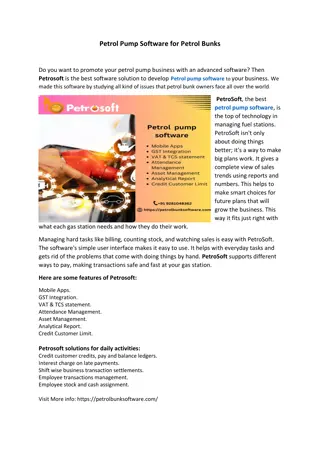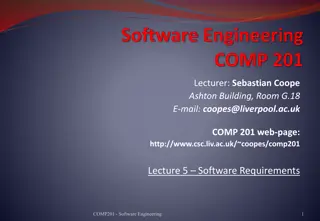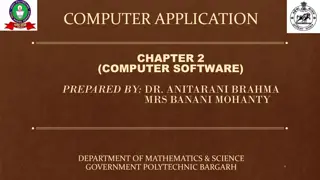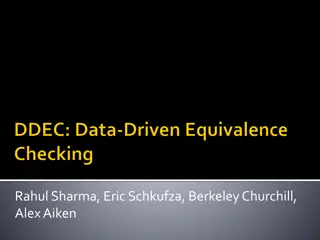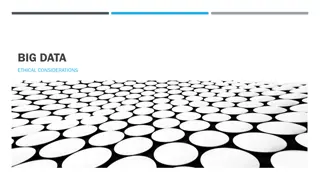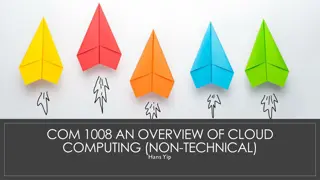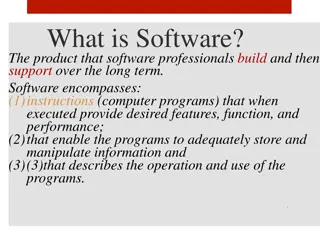Strategies for Big Refactorings in Software Development
Refactoring large portions of code can be as risky as tightrope walking without a net. However, by focusing on key areas like teasing apart inheritance, converting procedural designs to objects, and separating domain from presentation, you can navigate these challenges effectively. This guide explores practical strategies to tackle big refactorings and ensure the system remains functional throughout the process.
Download Presentation

Please find below an Image/Link to download the presentation.
The content on the website is provided AS IS for your information and personal use only. It may not be sold, licensed, or shared on other websites without obtaining consent from the author. Download presentation by click this link. If you encounter any issues during the download, it is possible that the publisher has removed the file from their server.
E N D
Presentation Transcript
Big Refactorings Steve Chenoweth, RHIT Above Man on wire Big refactorings feel just as dangerous, even if they are not, because you may hit intermediate stages during which you can t immediately test if the system still works, or not. Ch 12 in Fowler 1
This is the big win Make better sense of big chunks of code. Consider them first, not last! Typical situations: Big inheritance mess. Small parts of something that became big parts. Dependencies that grew and grew. Areas you know are hard to maintain. Q1 2
Teasing apart inheritance A hierarchy that does two different jobs. Pick the important job keep in current hierarchy. Use Extract Class to get rid of subsidiary job. Decide if subclasses are needed for these. Use Move Method to move the behavior over, Till the offending subclass has no more code! Q2 3
Fowlers example: The trick is to know the basis for pulling it apart: Like, Are we going to add yet another presentation style? 4
Converting Procedural Designs to Objects Common in C, C++, etc. systems. People bad at OO also write Java, C# this way! Record types become dumb data objects with accessors. Start with a single class. Use Extract Method on long procedures. Move to the proper dumb data class. Try to pull all the code from the original class or module. Q3, 4, 5 5
Separate Domain from Presentation The most common offender a freshman design style. Create a design class for each window. Represent complex data presented, like rows of a grid. Decide if data is UI or domain, separate! Examine logic and use Extract Method to separate. Q6 6
Fowlers example: Great questions for any system might be: Can we add an iOS interface? Or, Can we test just the domain part? 7
Extract Hierarchy Take the class that s one giant conditional, and create a hierarchy of subclasses based on the logic. This one is done like you ve already been doing them. Right Programmer Paul Graham s Hierarchy of disagreement. He claims that, the higher you can go in the hierarchy, when disagreeing with someone, the less likely you are to offend them personally. Q7 8


